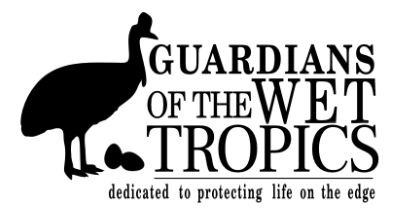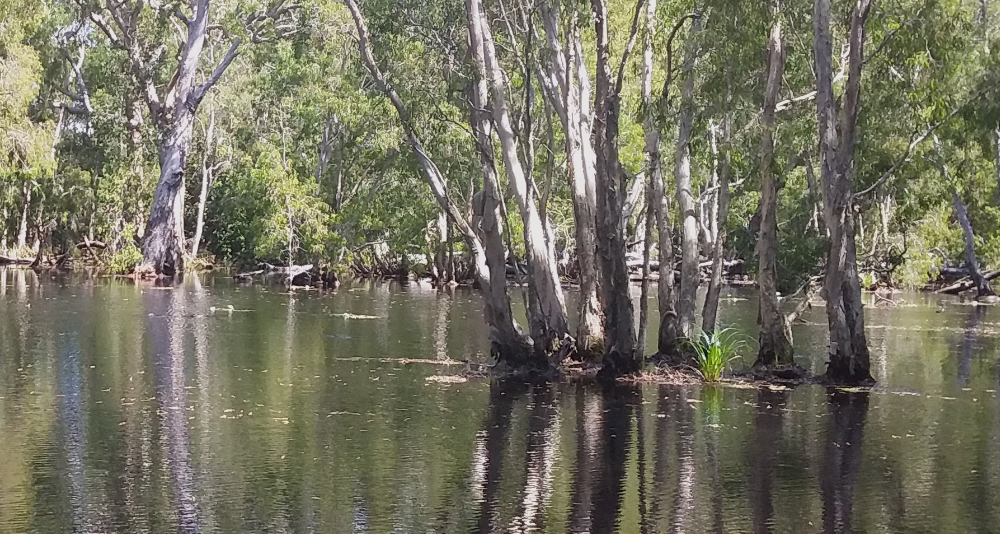
Caring for flora and fauna
The species of Flora & Fauna on our continent have been shaped over thousands of years by the Traditional owners creating a unique, diverse and interesting variety of species, many found nowhere else.
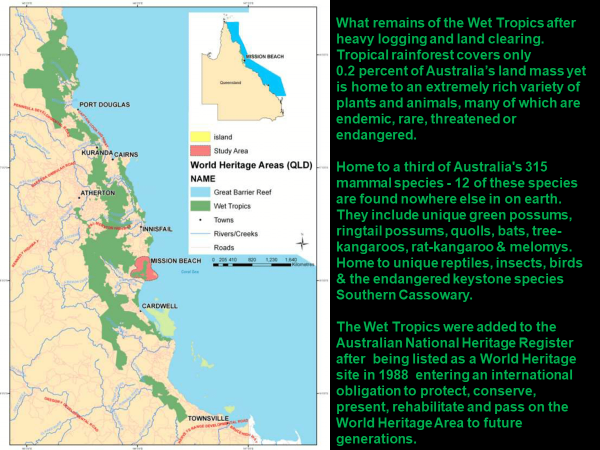
Traditional owners understanding of weather, seasons, fire management, farming, treading lightly on the earth, sharing resources, listening to the sounds of nature, and the way they see the landscape, the rocks and fungi, the shape of a tree, the cry of a bird is all significant we can learn a lot through thoughtful engagement and by offering more respect to the people and their rich culture and lore.

Many Traditional bush medicine and tucker plants are threatened or endangered along with ecosystems or plant species which particular native wildlife rely on for food or habitat.
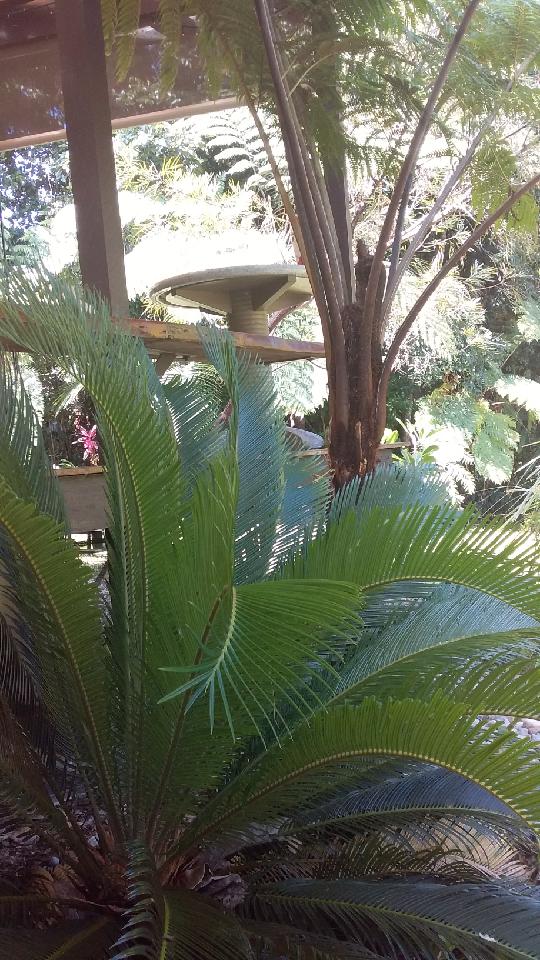 With our Guardians revegetation projects, we focus strongly on working with Traditional Owners and Indigenous Land and Sea Rangers to ensure that species planted are endemic to that area and significant to Indigenous people’s knowledge of restoring the landscape back to good health and create healthier cultural and social relationships into the future.
With our Guardians revegetation projects, we focus strongly on working with Traditional Owners and Indigenous Land and Sea Rangers to ensure that species planted are endemic to that area and significant to Indigenous people’s knowledge of restoring the landscape back to good health and create healthier cultural and social relationships into the future.
Many are noticing the decline. The loss and degradation of native plant species, the changing seasons, the number of plants, and variety of important flowering and fruiting plants, and the subsequent loss of insects, butterflies, birds, bats, reptiles, and mammal species for their important role in pollination.
Invasion of escaped introduced garden plants into the Wet Tropics, is recognised as a problem. One of the management solutions is stopping it at its source. Through education we encourage the community away from planting introduced exotic plant species and show the amazing variety of beautiful landscaping ideas using endemic native species that will reduce your need for watering, mowing, or weeding. By enriching your backyard with a native habitat, you create your own Eden for visiting birds and butterflies, including a pond is also ideal for birds, dragonflies, and frogs.
Never release aquarium plants, fish, crays, snails etc into natural waterways as they spread disease and introduce pest invasive species into these waterways. Introduced species can out compete threatened or endangered native aquatic plants, amphibians, fresh-water fish, and crayfish species. By connecting community, with Traditional Owners, scientists, researchers, and our partners to develop localised citizen science or water monitoring projects together we plan to reduce this decline. If you are interested in developing a model in your neighborhood, please contact us.
One introduced invasive species, the cane toad, has caused devastating impacts now stretching across most of Australia. First released in Far North Qld the impacts are felt on many freshwater fish and aquatic species, including the entire life cycle of endangered frogs, reptiles, mammals, and has proved devastating for the threatened spotted tailed quoll populations. The impacts are through lethal toxic ingestion and or competition for resources. We can all do our part to humanely remove any cane toad that wanders through our patch.
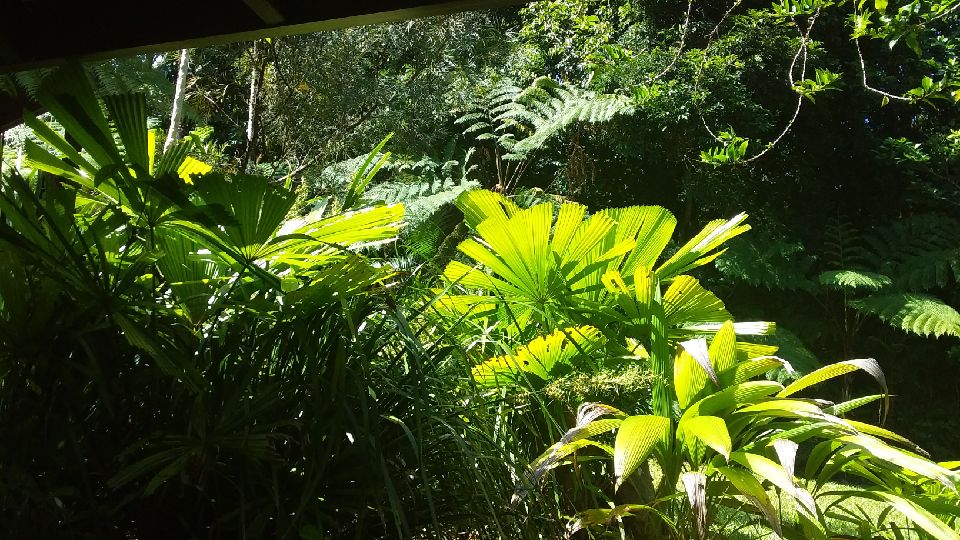 As Guardians the use of chemicals is something we aim to avoid. Herbicides, pesticides, and fungicides are damaging the fragile sensitive eco system. Frogs are particularly susceptible to poisons in the environment. Threaten Species Management Plans have been developed to protect the magnificent Broodfrog, stream dwelling rainforest frogs of the Wet Tropics including the Sharp-Snouted day frog, Northern Tinker frog, Armoured Mistfrog, Waterfall frog, Mountain Mistfrog, Common Mistfrog and Australian Lacelid. The infection of amphibians with Chytrid fungus resulting in Chytridiomycosis a lethal fungal disease, is believed to be spreading across the landscape by domesticated dogs swimming in water ways.
As Guardians the use of chemicals is something we aim to avoid. Herbicides, pesticides, and fungicides are damaging the fragile sensitive eco system. Frogs are particularly susceptible to poisons in the environment. Threaten Species Management Plans have been developed to protect the magnificent Broodfrog, stream dwelling rainforest frogs of the Wet Tropics including the Sharp-Snouted day frog, Northern Tinker frog, Armoured Mistfrog, Waterfall frog, Mountain Mistfrog, Common Mistfrog and Australian Lacelid. The infection of amphibians with Chytrid fungus resulting in Chytridiomycosis a lethal fungal disease, is believed to be spreading across the landscape by domesticated dogs swimming in water ways.
We are working with experts to compile a list of alternative options for domestic use. There are many groups involved including Local Councils, Terrain Natural Resources, Landcare, and other partners that are working with farmers on reducing the use of fertilizers and chemicals, and through grant funding are planting along riparian corridors to reduce soil and chemical run off to the reef.
 We have relationships across all levels of Government working with and lobbying regional Councils to encourage the minimal use of poisons.
We have relationships across all levels of Government working with and lobbying regional Councils to encourage the minimal use of poisons.
The Wet Tropics Management Authorities website has a wonderful list of Flora and Fauna species we would encourage you to visit
https://www.wettropics.gov.au/plants-animals
https://www.wettropics.gov.au/threatened-species-and-communities
Domestic Predatory Animals (dogs and cats) ownership living in the Wet Tropics Bioregion
Have you carefully considered if you really need a pet?
- You must your fence your yard this prevents native wildlife moving across the landscape and you forgo the joy of experiencing our unique native wildlife experiences in your back yard.
- The costs of feeding, vet bills, registration, microchipping, desexing, fencing.
- Loss of freedom to come and go away on weekends etc without getting a pet sitter.
- Picking up after them and cleaning litter trays, bathing etc
- It is a 14-year commitment
- The grief when they die
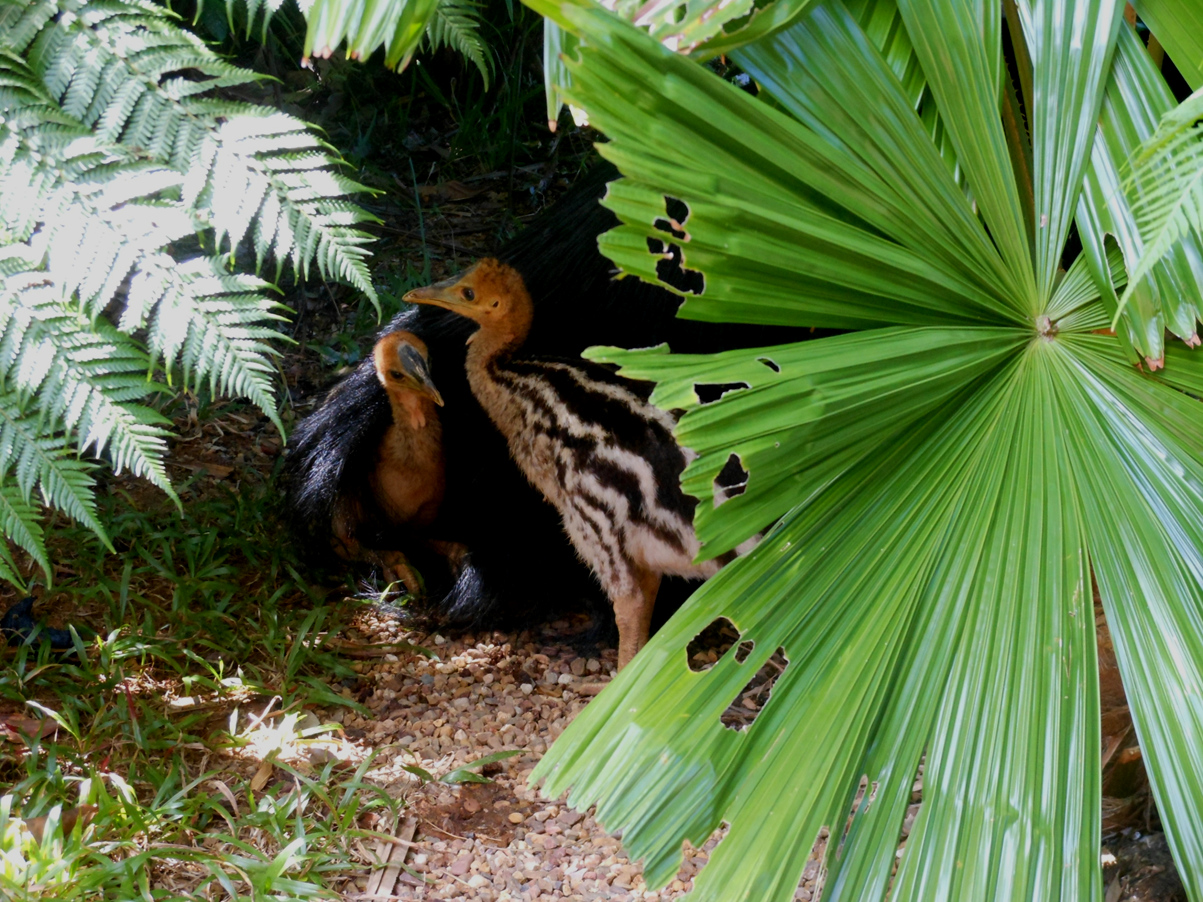
These two month old cassowary chicks are having quiet time under the protection of their dedicated father, after having a drink and swimming in our shallow pond adjoining the World Heritage Rainforest. What a joy and privilege to watch these chicks grow. They are safe to do this as our property has no domesticated pets and no need to fence pets in and nature out. Native wildlife come and go freely on a daily basis.
When you share your space with native wildlife you learn many things, stillness, alertness, mindfulness, the joy of life, resilience in adversity, drinking water, acceptance of different species within the space, or enemies, you form appreciation and care for, but nonattachment as they come and go, acceptance of changing weather, singing in the rain and freedom to love and be your individual self.
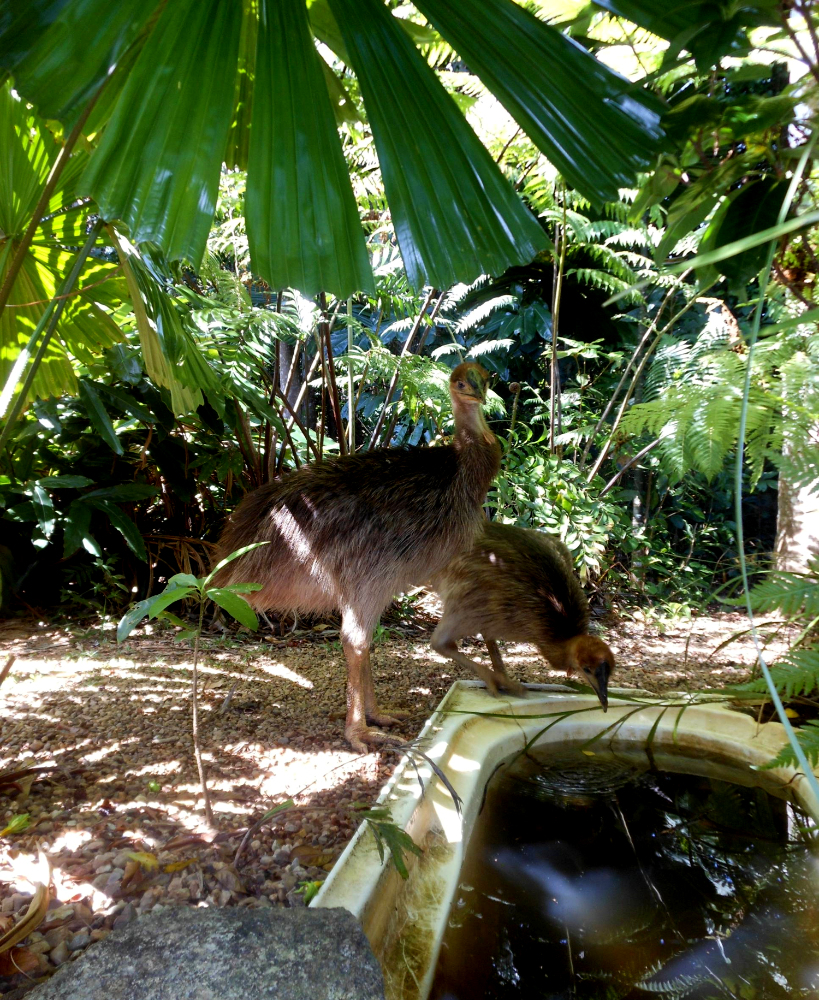
The chicks are now almost six months old visiting our backyard pond. Tragically this was the last photo I was to take of them. That night they were killed by roaming pig hunting dogs, illegally trespassing through my wildlife sanctuary and entering Djiru National Park within the Cassowary Coast. “If you own a dog you are 100% responsible”.
It is well documented that cats if not managed properly can hunt across a large area of land causing a major loss of native species and adapt readily to becoming feral. If you own a cat, it must be kept indoors at night and please do not have a bird bath or attract birds or wildlife to your property. Many say their cat or dog just sleeps all day and would not hurt a fly. However, have you considered that if native wildlife learn that dogs or cats are not threatening because of your well-behaved pet’s behavior your neighbor’s pet may not be so friendly.
There is a growing trend within the community to own one or more large bodied dogs, but now, more and more people are realizing the costs and potential threats they pose if not managed properly to public safety, neighborhood pets, livestock, and native wildlife.
Did you know domesticated predatory pets chase, menace, or hunt for sport not just for food, as native predatory animals do. Feral dogs cause major economic losses to livestock and along with feral cats have a detrimental impact on native wildlife. Native dingoes if not mixed with domesticated dogs only hunt for food.
